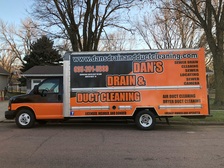
Get matched with top gas log pros in Gettysburg, SD
Enter your zip and get matched with up to 5 pros
Need a pro for your gas log service project in Gettysburg, SD?
Verified Reviews for Gas Log Service pros in Gettysburg, SD
*The Angi rating for Gas Log Service companies in Gettysburg, SD is a rating based on verified reviews from our community of homeowners who have used these pros to meet their Gas Log Service needs.
*The HomeAdvisor rating for Gas Log Service companies in Gettysburg, SD is a rating based on verified reviews from our community of homeowners who have used these pros to meet their Gas Log Service needs.
Last update on December 15, 2025
Find Gas log pros in Gettysburg

AppliancePartsPros.com
AppliancePartsPros.com
Since 1999, we've helped millions of do-it-yourselfers save money and fix their broken appliances quickly by providing quality appliance parts and free repair advice. We are only an online appliance parts retailer that offers a 365 day warranty and fast shipping. We also offer technical advice and diagnosis totally free 6 days a week. If you are interested in repairing your own appliance, please call us at 1-877-477-7278 or click live chat on our web site. We will help diagnose the problem and provide you with all the necessary information for the repair free of charge. It's better with the Pros!™ Avoid costly service calls - visit us at http://www.appliancepartspros.com
"Beware of shipping issues with this company. Ordered an ice maker installation kit on 10/10/25. Shipping was due no later than 10/20 according to company and FedEx tracking. FedEx tracking showed the package at their facility for 8 days without moving beginning on 10/15. Called FedEx 3 times. Each time they said they cannot find package and I have to contact shipper. Shipper has to make a claim, they will not mark it as lost. Called Appliance Parts Pros twice. Each time they say FedEx has to mark package lost before they will do anything. They also state they have to wait 14 days from them before doing anything because of their contract with FedEx. I don't care about their contract, I want what was ordered and paid for. Just going in circles with them and FedEX. If they shipped after 14 days it would be 22 days from that point, 32 days from the date of order if they shipped it that day. There was a deadline for installing this part before tenants arrive. They did not care, would not m"
Ron R on October 2025
Since 1999, we've helped millions of do-it-yourselfers save money and fix their broken appliances quickly by providing quality appliance parts and free repair advice. We are only an online appliance parts retailer that offers a 365 day warranty and fast shipping. We also offer technical advice and diagnosis totally free 6 days a week. If you are interested in repairing your own appliance, please call us at 1-877-477-7278 or click live chat on our web site. We will help diagnose the problem and provide you with all the necessary information for the repair free of charge. It's better with the Pros!™ Avoid costly service calls - visit us at http://www.appliancepartspros.com
"Beware of shipping issues with this company. Ordered an ice maker installation kit on 10/10/25. Shipping was due no later than 10/20 according to company and FedEx tracking. FedEx tracking showed the package at their facility for 8 days without moving beginning on 10/15. Called FedEx 3 times. Each time they said they cannot find package and I have to contact shipper. Shipper has to make a claim, they will not mark it as lost. Called Appliance Parts Pros twice. Each time they say FedEx has to mark package lost before they will do anything. They also state they have to wait 14 days from them before doing anything because of their contract with FedEx. I don't care about their contract, I want what was ordered and paid for. Just going in circles with them and FedEX. If they shipped after 14 days it would be 22 days from that point, 32 days from the date of order if they shipped it that day. There was a deadline for installing this part before tenants arrive. They did not care, would not m"
Ron R on October 2025
CJ's Chimney Sweep and Home Improvement
CJ's Chimney Sweep and Home Improvement
CJ's Chimney Sweep has been in business for over 25 years. We are licensed, bonded and insured.
CJ's Chimney Sweep has been in business for over 25 years. We are licensed, bonded and insured.
Stonebrook Roofing Inc
Stonebrook Roofing Inc
Additional email - [email protected]. Additional phone - (402) 430-5519.
Additional email - [email protected]. Additional phone - (402) 430-5519.

Sears Home Services
Sears Home Services
Sears Home Services is America’s #1 appliance services provider. Our thousands of experts based throughout the U.S. deliver guaranteed quality and workmanship. We work on most makes and models whether they were purchased at Sears or not. We take care of your house so you can enjoy your home. Only Sears offers 3 unique ways to save on appliance repairs! 1. Standard Repair Service + 90 Day Guarantee • Cost is provided after technician diagnoses the problem • 90 day guarantee on parts and labor* 2. Flat Repair Cost + Extended Repair Coverage • $249.99 or $299.99 pre-set price (depending on type of appliance) • 1 year of coverage up to $500 for any additional repairs (includes parts)** 3. Flat Repair Cost + Multiple Appliance Coverage • $129.99 for your initial repair with purchase of Home Warranty Appliance Plan • 1 year of repair coverage for up to 10 appliances with 11 subsequent monthly payments of $49.99*** Book your appointment with a Sears expert technician today! * 90 Day Guarantee: The limited warranty provides that if within 90 days from the date of your Sears in-home repair your appliance fails to operate for reasons related to the original repair service when used normally in accordance with manufacturer guidelines, we will replace any parts that failed due to defects in the material or workmanship and perform any labor related to the original repair free of charge. Excludes damage caused due to service provided by any party other than Sears. This warranty gives you specific legal rights, and you may have other rights that vary by state. ** Appliance must be less than 10 years old to qualify for Service Smart Agreement. Covers up to $500 in parts and labor. Limitations apply. *** Limitations apply”
Sears Home Services is America’s #1 appliance services provider. Our thousands of experts based throughout the U.S. deliver guaranteed quality and workmanship. We work on most makes and models whether they were purchased at Sears or not. We take care of your house so you can enjoy your home. Only Sears offers 3 unique ways to save on appliance repairs! 1. Standard Repair Service + 90 Day Guarantee • Cost is provided after technician diagnoses the problem • 90 day guarantee on parts and labor* 2. Flat Repair Cost + Extended Repair Coverage • $249.99 or $299.99 pre-set price (depending on type of appliance) • 1 year of coverage up to $500 for any additional repairs (includes parts)** 3. Flat Repair Cost + Multiple Appliance Coverage • $129.99 for your initial repair with purchase of Home Warranty Appliance Plan • 1 year of repair coverage for up to 10 appliances with 11 subsequent monthly payments of $49.99*** Book your appointment with a Sears expert technician today! * 90 Day Guarantee: The limited warranty provides that if within 90 days from the date of your Sears in-home repair your appliance fails to operate for reasons related to the original repair service when used normally in accordance with manufacturer guidelines, we will replace any parts that failed due to defects in the material or workmanship and perform any labor related to the original repair free of charge. Excludes damage caused due to service provided by any party other than Sears. This warranty gives you specific legal rights, and you may have other rights that vary by state. ** Appliance must be less than 10 years old to qualify for Service Smart Agreement. Covers up to $500 in parts and labor. Limitations apply. *** Limitations apply”

G & N Construction Inc
G & N Construction Inc
G & N Construction, Inc. is dedicated to engaging in safe, secure, cost effective building practices and providing the best value for dollars spent in the residential and commercial building market in the Pierre, Ft. Pierre, and surrounding Central South Dakota area. We have our own carpenters, roofers, and concrete professionals. They are able to provide experienced and professional surveyors, architects, engineers, electricians, plumbers, mason's, painters, heating/air conditioning specialists, cabinet makers, and flooring installers as sub-contractors. G & N Construction, Inc. is able to do all types of concrete work: basements, sidewalks, driveways, footings, retaining walls, patios, stamped & stained concrtete and foundations for mobile homes. Give us a call today.
G & N Construction, Inc. is dedicated to engaging in safe, secure, cost effective building practices and providing the best value for dollars spent in the residential and commercial building market in the Pierre, Ft. Pierre, and surrounding Central South Dakota area. We have our own carpenters, roofers, and concrete professionals. They are able to provide experienced and professional surveyors, architects, engineers, electricians, plumbers, mason's, painters, heating/air conditioning specialists, cabinet makers, and flooring installers as sub-contractors. G & N Construction, Inc. is able to do all types of concrete work: basements, sidewalks, driveways, footings, retaining walls, patios, stamped & stained concrtete and foundations for mobile homes. Give us a call today.
Midwest Masonry
Midwest Masonry
Midwest Masonry is happy to offer bids on Brick, Block, Stone, Foundation Repair, Foundation Waterproofing and Egress Window Instillation.
Midwest Masonry is happy to offer bids on Brick, Block, Stone, Foundation Repair, Foundation Waterproofing and Egress Window Instillation.
See It N 3D Design & Technical Illustrations
See It N 3D Design & Technical Illustrations
The end product will be your Blue Prints, Floor Plans, Notes or drawings (non-technical nor artistic required) designed and converted digitally into 3D (Isometric) full color digital images. (animation available). The purpose and value of my service is convey ideas and purpose of my Clients (Architects, Designers, Artists, Contractors, Home Owners etc.) into images from 8.5 to 11" to Large format such as Poster Board or Bill Board size for advertisement or demonstration, Video 3D animation also available. SEEIT N 3D before you build it SAVE $ and TIME. My illustrations are the last step before the project becomes a reality. I have saved my clients thousands of dollars by allowing a Virtual Reality Preview of the end product/ project using the proposed materials, colors and textures. Email for a free consultation, include samples for a quote.
The end product will be your Blue Prints, Floor Plans, Notes or drawings (non-technical nor artistic required) designed and converted digitally into 3D (Isometric) full color digital images. (animation available). The purpose and value of my service is convey ideas and purpose of my Clients (Architects, Designers, Artists, Contractors, Home Owners etc.) into images from 8.5 to 11" to Large format such as Poster Board or Bill Board size for advertisement or demonstration, Video 3D animation also available. SEEIT N 3D before you build it SAVE $ and TIME. My illustrations are the last step before the project becomes a reality. I have saved my clients thousands of dollars by allowing a Virtual Reality Preview of the end product/ project using the proposed materials, colors and textures. Email for a free consultation, include samples for a quote.
Aberdeen Masonry Inc
Aberdeen Masonry Inc
Billing is usually 1/3 down, 1/3 half finished and the rest upon completion for larger jobs. Smaller projects are usually paid upon completion. Special arrangements can be made if need be. Our employees demonstrate professionalism on the jobsite and are chosen based on skill and desire to see the job done right.
Billing is usually 1/3 down, 1/3 half finished and the rest upon completion for larger jobs. Smaller projects are usually paid upon completion. Special arrangements can be made if need be. Our employees demonstrate professionalism on the jobsite and are chosen based on skill and desire to see the job done right.
Brown Wegher Construction
Brown Wegher Construction
Additional e-mail: [email protected]. Also doing business as Wegher Construction and Wynstone Development Corp. Locally owned. Mailing address: PO Box 770, North Sioux City SD, 57049.
Additional e-mail: [email protected]. Also doing business as Wegher Construction and Wynstone Development Corp. Locally owned. Mailing address: PO Box 770, North Sioux City SD, 57049.
L & S Construction LLC
L & S Construction LLC
All kinds of construction work From A to Z!
All kinds of construction work From A to Z!
The homeowners guide to home care is here
From average costs to expert advice, get all the answers you need to get your job done.

Shipping a motorcycle is easier said than done. Here are the different motorcycle shipping options available and how much they cost.

How much does it cost to move out of state? The answer depends on the size of your home, the distance of your move, and other factors.

Whether you’re upgrading an old appliance or rearranging a kitchen layout, our guide breaks down the costs to move your fridge.

Moving out of state? Use this checklist to prepare for a successful move.

You'll need the essentials before moving into your first home. Our first home essentials checklist will ensure you don't miss anything before you move in.

Learn what to look for before you move into a new home as well as common signs of damage with our complete move-in inspection checklist.
- Tree Service in Gettysburg
- Flooring in Gettysburg
- Septic Tank in Gettysburg
- Doors in Gettysburg
- Moving in Gettysburg
- Fencing in Gettysburg
- Painting in Gettysburg
- Windows in Gettysburg
- Home Builders in Gettysburg
- Home Inspection in Gettysburg
- Plumbing in Gettysburg
- Holiday Decorating in Gettysburg
- Roofing in Gettysburg
- Plumbing in Gettysburg
- Tree Service in Gettysburg
- Kitchen And Bath Remodeling in Gettysburg
- Electrical in Gettysburg
- Concrete Repair in Gettysburg
- Exterior Painting in Gettysburg
- Windows in Gettysburg
- Landscaping in Gettysburg
- Lawn And Yard Work in Gettysburg
- Siding in Gettysburg
- Fencing in Gettysburg
- Flooring in Gettysburg
- Garage Doors in Gettysburg
- Home Builders in Gettysburg
- Foundation Repair in Gettysburg
- Doors in Gettysburg
- Concrete Driveways in Gettysburg
- 🌱 "Mow a small front yard"
- 🛠 "Fix a leaking pipe under the sink"
- 🏠 "Repair shingles on an asphalt roof"








